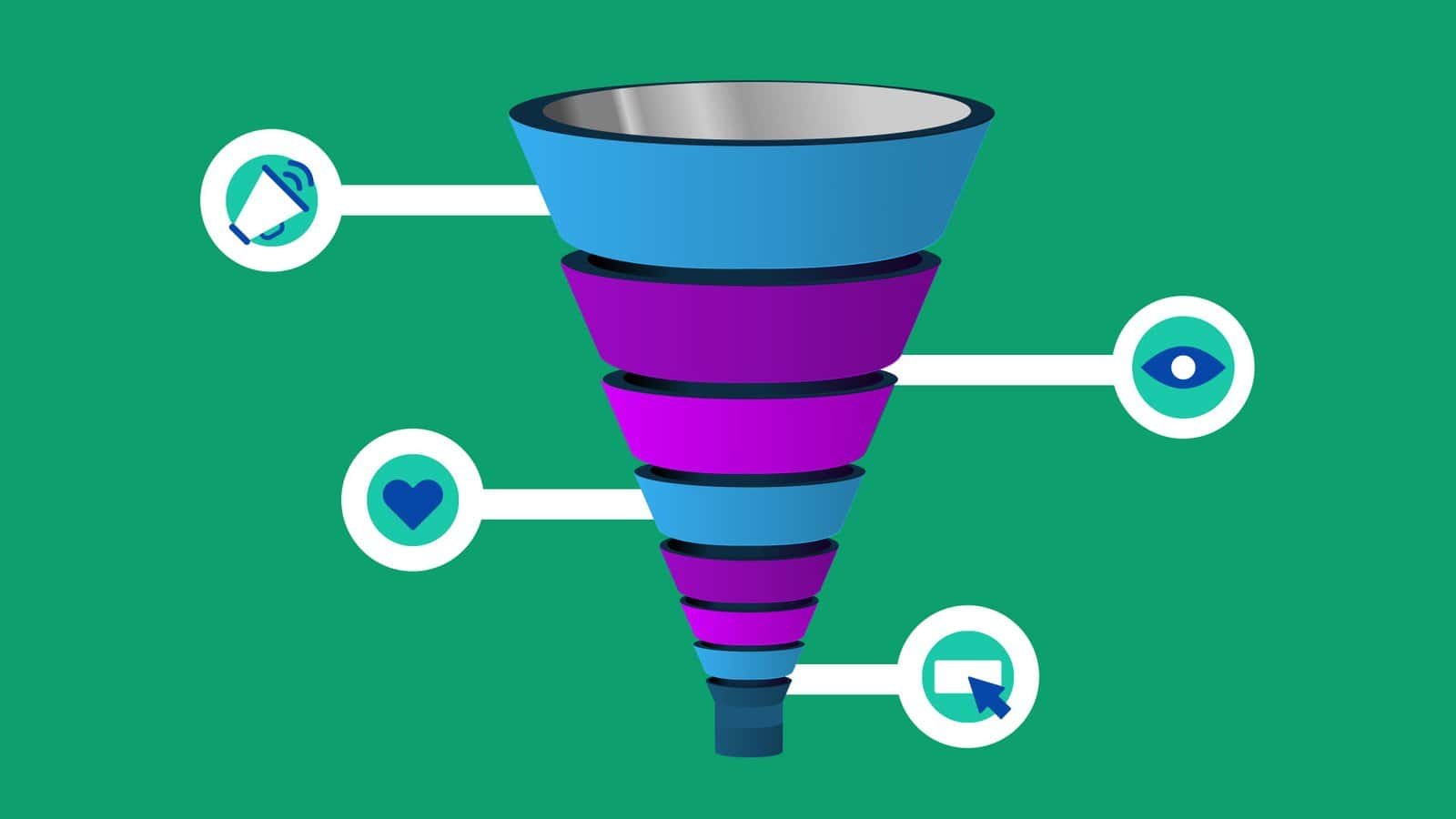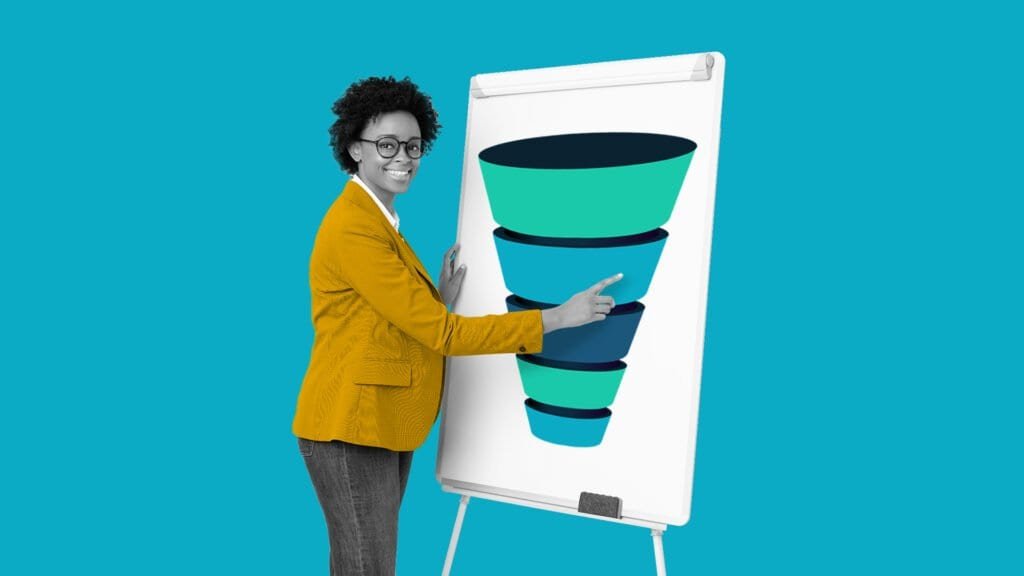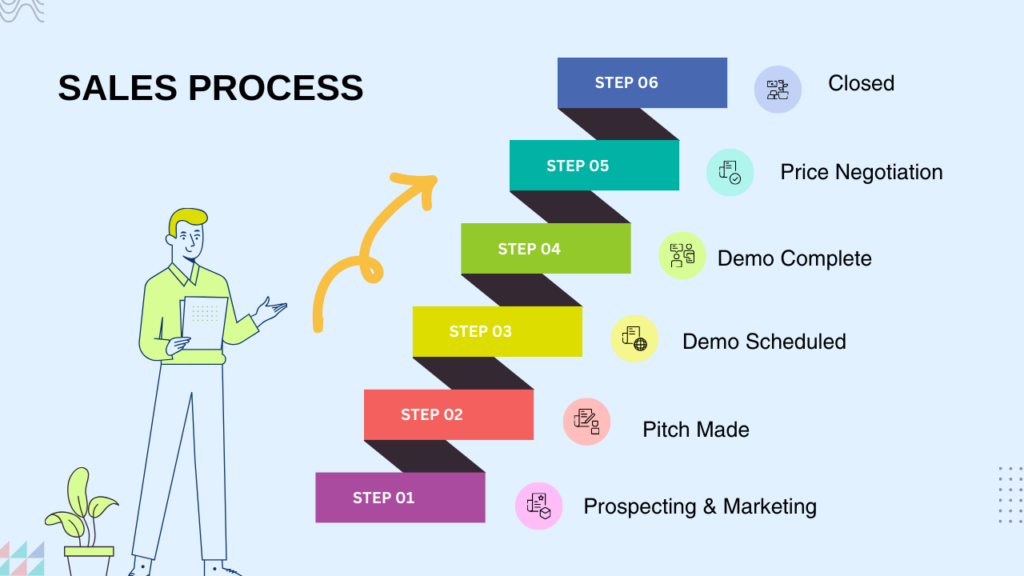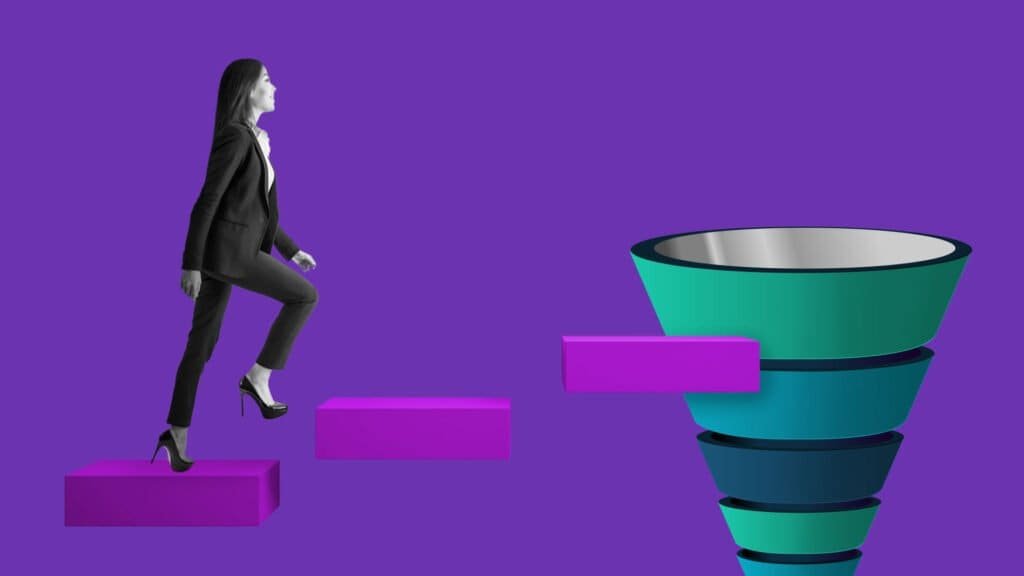Hey there! Ever feel like you’re shouting into the void when you’re trying to sell your product or service? Like you’re putting in all this effort but not seeing the results you want? You’re not alone. That’s where a sales funnel comes in. It’s like a roadmap that guides your potential customers towards making a purchase, turning that shout into a targeted message that resonates with the right people. Intrigued? Let’s dive in! By implementing a well-structured sales funnel, you can streamline your outreach efforts and focus on engaging with those who are genuinely interested in what you offer. This approach not only saves you time but also helps you maximize sales with effective funnels, creating a streamlined path that leads to increased conversions. With the right strategies in place, you can transform your sales process into a powerful engine driving consistent revenue. By exploring advanced sales funnel strategies, you can identify key touchpoints where potential customers tend to drop off and optimize those areas for better engagement. Additionally, leveraging data analytics allows you to fine-tune your funnel continuously, ensuring that you’re not just reaching more people but the right audience that is most likely to convert. Embracing these techniques can significantly elevate your sales game, making your efforts more impactful and rewarding. To further enhance your understanding, consider exploring the concept of ‘sales funnels on wordpress explained.’ This resource can provide you with valuable insights on how to set up your own sales funnel effectively within a WordPress environment. By leveraging these tools, you’ll be able to create a seamless experience for your customers, guiding them through each stage of the purchasing journey with ease.
What is This Magical “Sales Funnel” Anyway?
Imagine a funnel. You pour something in at the top, and it comes out the bottom, right? A sales funnel works the same way, but instead of liquids, we’re talking about potential customers!
At the top, you have a wide audience—people who might be interested in what you have to offer. As they move through the funnel, you nurture them with targeted content and offers, gradually narrowing down the group to those who are most likely to become paying customers. It’s a system designed to attract, engage, and convert your audience, making your marketing efforts more efficient and effective.
Why Do You Need a Sales Funnel?
Picture this: you’re at a party, and you meet someone interesting. You wouldn’t immediately ask them to marry you, right? (Unless you’re really bold, but that’s another story!) A sales funnel operates on the same principle.
It’s about building a relationship with your audience and guiding them through the stages of awareness, interest, and decision before they’re ready to commit to a purchase. Think of it as a courtship of sorts, where you woo your customers with valuable information, address their concerns, and ultimately demonstrate why your solution is the best fit for their needs.

Unveiling the 7 Steps to Sales Funnel Success
Ready to get down to business and build your first sales funnel? Awesome! Here’s a step-by-step breakdown, complete with actionable tips to get you started: Understanding your target audience is crucial to effectively master sales funnel strategies. Start by identifying their pain points and desires, as this will guide your content and messaging throughout the funnel. As you progress, focus on optimizing each stage to enhance conversions and ultimately drive more sales. Utilize tools and analytics to track user behavior and measure the effectiveness of your funnel at each stage. By gaining insights from this data, you can refine your approach and learn how to create effective sales funnels that resonate with your audience. Remember, continuous testing and tweaking are key to maximizing your funnel’s potential and ensuring long-term success.
1. Lay the Foundation: Building Your Bottom-of-Funnel Assets
This might seem counterintuitive, but start by focusing on the end of your funnel. Before you even think about attracting leads, you need a solid foundation for converting them. Think of it like this: You wouldn’t build a house starting with the roof, would you?
Here’s what you need to create:
- Lead magnets: These are irresistible offers (think ebooks, webinars, free trials, or discounts) that entice potential customers to give you their contact information. We’ll talk more about these later, but for now, just know they’re crucial for moving people to the next stage of your funnel.
- Sales Pages: This is where the magic happens. Your sales page is dedicated to convincing your audience to purchase your product or service. It needs to be clear, concise, and compelling, showcasing the benefits and addressing any potential objections.
- Testimonials: Nothing builds trust like hearing from satisfied customers. Gather glowing testimonials that showcase the value you provide and put potential buyers at ease.
By starting with these assets, you’ll be ready to capitalize on the leads you generate in the later stages.
2. Spreading the Word: Ignite Awareness and Draw in the Crowd
Now it’s time to get people excited about what you offer! This stage is all about casting a wide net and introducing your brand to your target audience. Remember, they may not even realize they have a problem that you can solve, so education is key.
Unleash your creativity with these tactics:
- Blog Posts: Share valuable insights, tips, and tricks related to your industry. Become a trusted source of information and subtly position your product or service as a solution.
- Social Media: Engage with your target audience on platforms like Facebook, Instagram, and Twitter. Share engaging content, answer questions, and run targeted ads to reach a wider audience.
- Videos: Create captivating YouTube videos or live streams that educate and entertain. Show your personality and connect with your viewers on a personal level.
- Podcasts: Start your own podcast or appear as a guest on established shows to reach a new audience. Share your expertise and build credibility.
The goal is to pique their interest and get them curious about what you have to offer. Remember, you’re planting seeds that will blossom later in the funnel.
3. The Landing Zone: Creating Captivating Landing Pages (with Sign-Up Forms That Convert!)
Imagine having tons of people interested in what you do but no way to stay in touch. That’s where landing pages come in. Think of them as the bridge between your awareness-building efforts and your email list.
Craft irresistible landing pages with these tips:
- Clear Value Proposition: Make it crystal clear what visitors will gain by signing up. Highlight the benefits of your offer and use compelling headlines that grab attention.
- Concise Copy: Keep it short and sweet. Focus on the most important information and use bullet points and visuals to break up the text.
- Enticing Sign-Up Forms: Make it easy for people to join your email list. Use simple forms with minimal fields and a clear call to action.
- Social Proof: Sprinkle in testimonials and reviews to build trust and credibility. Show potential leads that others have had positive experiences with your brand.
Your landing page is the gateway to deeper engagement, so make it count!

4. The Irresistible Offer: Creating Lead Magnets That Make Them Say “Yes!”
Remember those lead magnets we talked about earlier? Now’s the time to unleash their power! Lead magnets are the key to turning casual visitors into engaged leads. They’re valuable resources that incentivize people to provide their contact information in exchange for something they truly want.
Here are some lead magnet ideas to get your creative juices flowing:
- Ebooks: Share your expertise in a concise, downloadable guide.
- Webinars: Host live online workshops that provide valuable information and insights.
- Free Courses: Offer a taste of your paid offerings with a free mini-course.
- White Papers: Provide in-depth research and analysis on industry trends.
- Product Demos: Give potential customers a sneak peek of your product in action.
- Free Consultations: Offer a free consultation to demonstrate your expertise and build a personal connection.
- Discounts or Coupons: Entice people to make their first purchase with an exclusive discount.
Pro Tip: Tailor your lead magnet to the specific interests of your target audience. The more relevant and valuable it is, the higher your conversion rate will be.
5. Nurturing the Relationship: Email Campaigns That Build Trust and Drive Conversions
Email marketing is the backbone of your sales funnel. It’s where you cultivate relationships, build trust, and ultimately guide leads towards making a purchase. Think of it like dating—you wouldn’t propose on the first date, right? You need to take the time to get to know each other and build a connection.
Here’s how to create email campaigns that convert:
- Welcome Sequence: Greet new subscribers with a warm welcome and set the tone for your future communication.
- Educational Content: Share valuable information that helps your audience solve their problems and achieve their goals.
- Product spotlights: Highlight the benefits of your product or service and demonstrate how it can improve their lives.
- Customer Stories: Share inspiring success stories from satisfied customers to build credibility and trust.
- Special Offers: Offer exclusive discounts and promotions to encourage leads to make a purchase.
Pro Tip: Personalize your emails as much as possible to create a one-on-one connection with each subscriber. Use their name, segment your list based on their interests, and tailor your content accordingly.
Bonus Tip: Don’t forget about retargeting ads! These clever ads follow your website visitors around the internet, reminding them of your brand and enticing them to return. And if you’re creating valuable content, SEO (search engine optimization) will help people find it organically through search engines like Google. It’s all about staying top-of-mind!
6. Sealing the Deal: Crafting a Compelling Sales Pitch That Converts
You’ve nurtured your leads, built trust, and demonstrated your expertise. Now it’s time to ask for the sale! This stage is all about presenting your offer in a way that’s irresistible to your audience.
Here’s how to craft a sales pitch that converts:
- Address Objections: anticipate potential concerns your audience might have and proactively address them.
- Highlight Benefits: Focus on the positive outcomes your audience will experience by choosing your product or service.
- Provide Social Proof: Leverage testimonials, reviews, and case studies to demonstrate your credibility and trustworthiness.
- Strong Call to Action: Make it clear what you want your audience to do next. Use action-oriented language and make it easy for them to take the desired step.
- Offer Incentives: Sweeten the deal with a limited-time discount, bonus, or guarantee to nudge hesitant buyers over the edge.
Remember, this is your chance to shine and show your audience why your solution is the best choice for them.
7. Beyond the Sale: Keeping Customers Engaged and Coming Back for More
Congratulations! You’ve successfully guided your leads through your sales funnel and made the sale. But the journey doesn’t end there. It’s just as important to keep your customers engaged and happy so they become loyal fans who spread the word about your brand.
Here’s how to keep the love alive:
- Thank-You Emails: Express your gratitude for their purchase and set the stage for a positive customer experience.
- Review Requests: Encourage satisfied customers to leave reviews and testimonials to build social proof.
- Referral Programs: Reward customers for referring their friends and family.
- Upsell and Cross-Sell Opportunities: Introduce customers to complementary products or services that enhance their initial purchase.
- Valuable Content: Continue to provide helpful information and resources that keep your customers engaged and coming back for more.
Pro Tip: Create an exclusive community or membership program for your most loyal customers to foster a sense of belonging and exclusivity.

Measuring Your Success: Tracking Key Metrics to Optimize Your Funnel
Just like a GPS helps you navigate, tracking key metrics allows you to monitor the performance of your sales funnel and identify areas for improvement.
Here’s what to watch for:
- Awareness Stage: Track website traffic, social media engagement, and lead magnet downloads to gauge the effectiveness of your top-of-funnel efforts.
- Interest Stage: Monitor email open rates, click-through rates, and website engagement to see how your audience is interacting with your content.
- Decision Stage: Track sales conversions, average order value, and customer lifetime value to measure the overall success of your funnel.
By analyzing these metrics, you can identify bottlenecks in your funnel and make adjustments to improve your conversion rates.
Why You Need Sales Funnel Software (Hint: It’s a Game-Changer!)
You could technically build a sales funnel manually, using a patchwork of different tools. But trust me, using dedicated sales funnel software is like having a personal assistant for your business. It automates tasks, streamlines processes, and provides valuable insights to optimize your funnel.
Here’s why sales funnel software is a must-have:
- Automation: Automate email sequences, lead nurturing, and other repetitive tasks to save time and effort.
- Integration: Connect all your marketing and sales tools in one central hub for seamless data flow and improved efficiency.
- Analytics: Gain valuable insights into the performance of your funnel and identify areas for improvement.
- Templates: Use pre-designed templates to get started quickly and easily, saving you time and effort.
Conclusion
Building your first sales funnel might seem daunting, but remember, you don’t have to do it all at once. Start with the basics, track your progress, and gradually refine your approach. It’s a journey of continuous improvement, and with each iteration, you’ll get closer to creating a sales machine that works like charm.
FAQs
How long does it take to build a sales funnel? The timeline varies depending on the complexity of your funnel and the resources you have available. It could take a few weeks or a few months to build a fully functional funnel, but remember, it’s an ongoing process. You’ll continually refine and optimize your funnel over time.
What’s the best sales funnel software for beginners? There are many great options available, but some popular choices for beginners include Kartra, ClickFunnels, and Leadpages. Each platform has its strengths and weaknesses, so it’s important to choose one that aligns with your specific needs and budget.
What if I don’t have a website? Can I still build a sales funnel? Absolutely! While having a website can enhance your funnel, it’s not a prerequisite. You can leverage social media platforms, landing page builders, and email marketing services to create a functional sales funnel.

